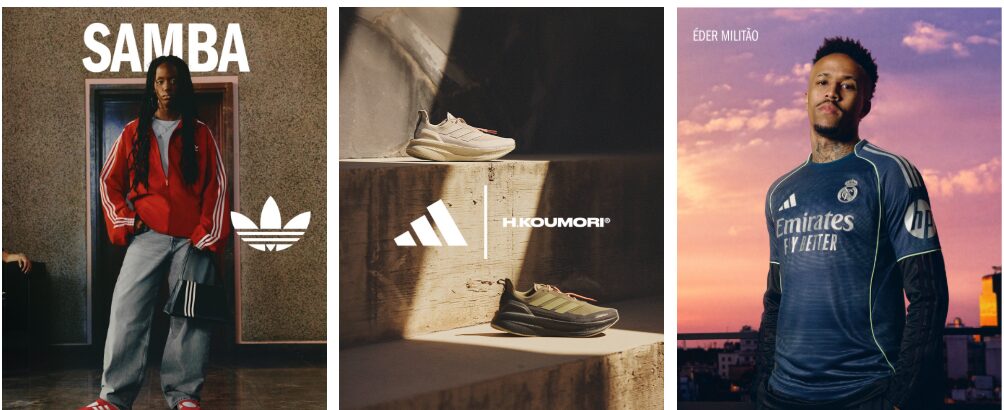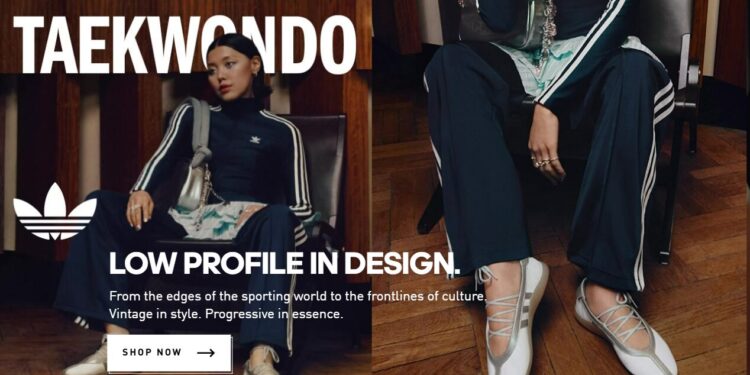Introduction to sustainable fashion
Sustainable fashion is more than just a trend; it’s a movement reshaping the clothing industry. As consumers become increasingly aware of their choices, brands must adapt or risk being left behind. With fast fashion dominating the market for years, its negative impact on our planet has never been clearer. But amidst this chaos, some companies stand out—leading the charge toward eco-friendly practices and responsible consumerism.
Adidas is one such brand making waves in sustainable fashion. Through innovative designs and partnerships with eco-conscious collaborators, they are paving the way for a greener future in style. Let’s delve into Adidas’ commitment to sustainability and explore how they’re setting new standards in an ever-evolving industry.
The fashion industry is undergoing a transformation. As consumers become increasingly aware of their environmental impact, sustainable fashion has emerged at the forefront of this movement. Gone are the days when style and sustainability were seen as mutually exclusive. Now, brands are stepping up to demonstrate that eco-friendly practices can coexist with cutting-edge design.
Adidas, a global leader in athletic wear, has embraced this shift wholeheartedly. With innovative strategies aimed at reducing waste and utilizing sustainable materials, they are setting an example for others in the industry. Let’s dive deeper into how Adidas is making strides toward a greener future while still keeping their signature sporty flair intact.
The negative impacts of fast fashion on the environment
Fast fashion has become a dominant force in the clothing industry, but its environmental toll is staggering. The rapid production cycles lead to massive waste. Millions of garments end up in landfills every year, contributing to pollution and resource depletion.
Water usage for cotton farming alone is alarming. It takes about 2,700 liters of water to produce just one t-shirt. This not only drains local water supplies but also harms surrounding ecosystems.
Moreover, many fast-fashion brands rely on synthetic materials like polyester. These fabrics shed microplastics during washing, which ultimately pollute oceans and harm marine life.
The chemicals used in dyeing processes often contaminate waterways, affecting both wildlife and communities near factories. Each step from production to disposal leaves a heavy footprint on our planet’s health—one that we can no longer ignore as consumers seek more responsible alternatives.

Collaborations with sustainable brands and designers
Adidas has taken significant strides in collaborating with sustainable brands and designers, showcasing its commitment to eco-friendly practices. These partnerships redefine what it means to be fashionable while being responsible.
One notable collaboration is with Parley for the Oceans. This initiative transforms ocean plastic waste into high-performance fabrics. It’s a powerful move that highlights how fashion can contribute positively to our planet.
Another exciting partnership is with Stella McCartney, a designer known for her staunch advocacy of sustainability. Together, they create collections that prioritize organic materials and ethical production methods.
These collaborations not only elevate Adidas’ product lines but also inspire consumers to consider their purchasing decisions more carefully. By aligning with visionary designers who share similar values, Adidas sets a benchmark in the industry for environmentally conscious fashion choices available today.
Consumer education and involvement in sustainability efforts
Consumer education plays a vital role in sustainable fashion. When shoppers understand the environmental impact of their choices, they can make more informed decisions.
Brands like Adidas are stepping up by providing transparency about their materials and processes. This empowers consumers to support eco-friendly practices. Knowledge is key—when people know what goes into making their clothes, they’re more likely to choose sustainability.
Involvement doesn’t stop at awareness. Engaging with local initiatives, participating in recycling programs, or attending workshops can deepen commitment to sustainable living.
Social media also amplifies this movement. Consumers share tips and experiences that inspire others to adopt greener habits in fashion consumption.
Together, educated consumers and brands create a ripple effect that challenges the status quo of fast fashion while promoting responsible purchasing decisions across the industry.
Impact on the fashion industry and future outlook
Adidas’s commitment to sustainability is creating ripples throughout the fashion industry. Brands are increasingly recognizing that eco-conscious practices can coexist with style and innovation.
As more companies adopt sustainable methods, consumers will likely demand transparency in production processes. This shift could redefine how brands operate, prioritizing ethics over mere profit margins.
The rise of circular fashion is also noteworthy. Recycling old materials into new products not only reduces waste but encourages creativity within design teams.
Future collaborations between sportswear giants and environmentally focused brands promise exciting developments. These partnerships can serve as a blueprint for merging aesthetics with responsibility.
With younger generations leading the charge towards sustainability, the landscape of fashion may transform drastically in coming years. The prevailing ethos will be one where respect for our planet shapes every collection released on the runway or store shelf.

Conclusion
As the fashion industry grapples with its environmental footprint, Adidas stands out as a beacon of hope. The brand’s commitment to sustainability not only addresses pressing ecological issues but also inspires others to follow suit. By embracing eco-friendly practices and fostering collaborations with sustainable designers, Adidas is shaping a new narrative for what it means to be fashionable in today’s world.
The impact on consumer awareness is profound. Shoppers are becoming more conscious of their choices, seeking brands that align with their values. This shift signals a broader change within the industry where sustainability can no longer be an afterthought but rather an essential element.
Looking ahead, the future of fashion holds promise as companies adopt responsible practices fueled by consumer demand. With innovators like Adidas leading the way, we may witness a transformation that harmonizes style and sustainability—creating a healthier planet for generations to come.
Sustainable fashion is no longer a niche market. It has become essential in reshaping how we view clothing and its impact on the world. Adidas stands out as an industry leader, making significant strides toward eco-friendly practices.
The fast fashion model, notorious for its detrimental effects on the environment, cannot sustain itself any longer. The massive waste generated by this industry contributes to pollution and resource depletion. Consumers are becoming increasingly aware of these issues, pushing brands like Adidas to adopt greener methods.
Adidas has taken impressive steps through collaborations with sustainable brands and designers. These partnerships aim to create innovative products while adhering to environmentally friendly practices. By working together, they raise awareness about sustainability in fashion.
Consumer education plays a crucial role in driving change within the industry. When shoppers understand their choices’ environmental impacts, they are more likely to seek sustainable options. Adidas encourages this shift by promoting transparency around their production processes and materials used.
The future of the fashion industry appears promising as more companies follow suit in adopting sustainable practices inspired by leaders like Adidas. With growing consumer demand for accountability and responsibility from brands, positive changes will continue to emerge.
As we navigate this evolving landscape, embracing sustainable fashion becomes vital for protecting our planet while still enjoying personal expression through clothing choices.
















